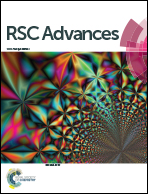The influence of titanium surfaces treated by alkalis on macrophage and osteoblast-like cell adhesion and gene expression in vitro
Abstract
Achieving fast and long-term osseointegration is one of the major goals in dental implant design. Physic-chemical surface modification is a key to osseointegration improvement. Two types of alkaline modifications, 1 M sodium bicarbonate and 0.05 M sodium hydroxide, were applied on the sand-blasting and acid etching (SLA) titanium surface. After the alkaline treatments, superhydrophilic SLA surfaces were produced. The mRNA expression level of IL-1β of Raw264.7 cells cultured on the sodium bicarbonate treated SLA surface was inhibited compared with SLA and sodium hydroxide treated surfaces, while MMP-9 expression on the sodium hydroxide treated SLA surface was increased with comparison to SLA and sodium bicarbonate treated surfaces. Cell adhesion of osteoblast-like MG63 cells on surfaces with alkaline treatments were moderately more pronounced than that on the SLA surface. With comparison to SLA surface, the proliferation of MG63 cells was decreased, while the alkaline phosphatase (ALP) activity was enhanced on the sodium bicarbonate treated SLA surface after 3 days. An increased mRNA expression level of integrin αv of MG63 cells were observed on the alkali treated surfaces compared with the SLA surface. Integrin β1, osteocalcin (OCN) and bone morphogenetic protein-2 (BMP-2) were enhanced on the sodium bicarbonate treated SLA surface when compared to the SLA surface. The results imply that the inflammation-related gene expression of macrophage cells is changed on sodium hydroxide and sodium bicarbonate treated SLA surfaces; the early adhesion of osteoblast-like cells is enhanced by both alkaline treatments, while the osteogenic differentiation is improved on sodium bicarbonate treated surface.


 Please wait while we load your content...
Please wait while we load your content...